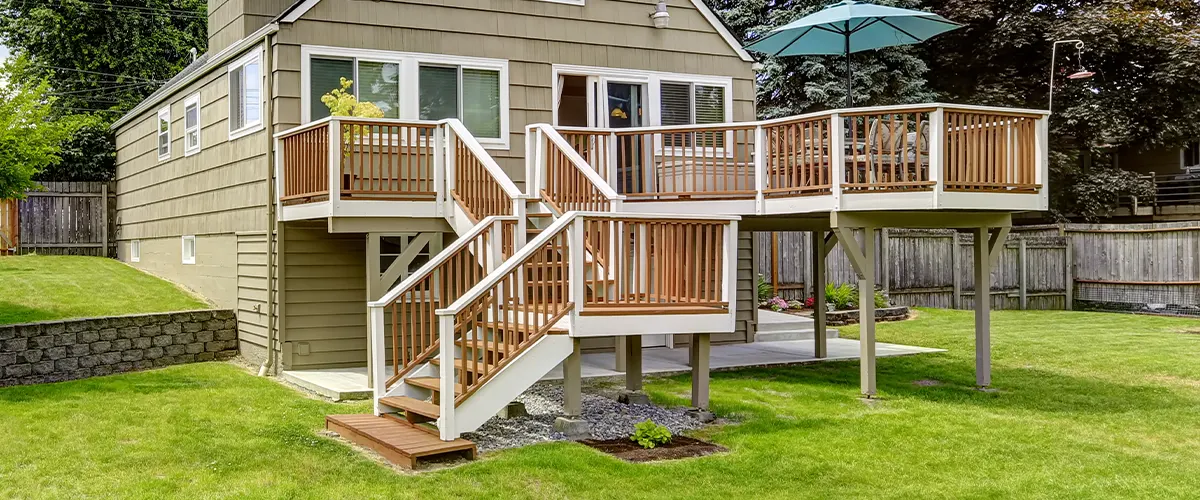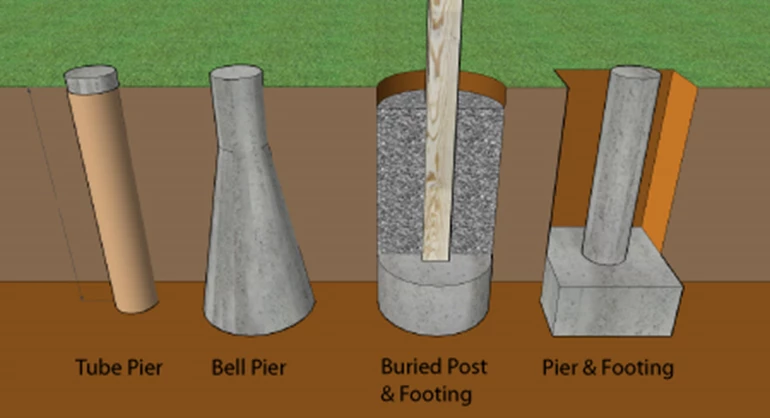Expert Tips for Setting Up Deck Footings to Support Your Outdoor Space
When it comes to developing a deck, one of the most essential elements to think about is the installment of proper grounds. These grounds are the foundation upon which your exterior area will certainly rest, giving security and assistance for years to come. What precisely does it take to mount deck grounds properly?
Significance of Proper Deck Footings
Correct deck footings are important for making certain the security and long life of your outside room. Without solid and effectively set up grounds, your deck may come to be unpredictable, leading to safety and security risks and pricey repair services.

In enhancement to stability, appropriate deck grounds also add to the durability of your exterior area (Deck Footings). Footings that are developed and created to stand up to the elements and soil problems in your location will certainly assist avoid the deck from moving or settling gradually. By making sure the footings are properly sized and mounted, you can decrease the danger of damages to the deck framework, extending its life expectancy and reducing the demand for costly repair services or substitutes

Picking the Right Kind Of Footings
When choosing the suitable type of footings for your deck, it is important to take into consideration variables such as soil problems, local building codes, and the total style of your exterior area. The kind of footing you choose will play an important role in ensuring the stability and long life of your deck.
One usual kind of footing is the concrete footing. Concrete footings are suitable for a lot of dirt problems and give exceptional support for decks. They are generally installed below the frost line to avoid moving and working out because of freezing and thawing cycles. An additional alternative is helical piers, which are suitable for areas with unstable dirt or high water tables. These piers are screwed right into the ground and offer strong support for the deck.
In many cases, you might need to utilize customized grounds, such as heap grounds or deep foundations, if you are constructing a multi-level or large deck. These footings are designed to distribute the weight of the deck over a larger area, making sure security and stopping clearing up or sinking.
Prior to picking a sort of footing, it is vital to speak with neighborhood building regulations and regulations to guarantee compliance. Furthermore, take into consideration the design and meant use your outside area. Variables such as the size, shape, and load-bearing requirements of your deck will certainly influence the kind of footing that is most ideal.
Preparing the Ground for Footing Setup
To appropriately prepare the ground for footing setup, it is very important to evaluate the dirt conditions and take necessary steps to guarantee security and toughness of the deck. The very first step is to dig deep into the area where the footings will be mounted. The depth of the excavation will depend on the frost line in your region and the specific needs of the deck design. It is necessary to get rid of any vegetation, rocks, or particles from the excavation to make sure a strong structure.
As soon as the location has actually been dug deep into, the following action is to small the dirt. This can be done using a plate compactor or by utilizing a hand tamper. Condensing the dirt aids to get rid of any kind of gaps or air pockets, which can bring about working out and instability in time.
After condensing the dirt, it is very important to lay a layer of gravel or crushed stone at the bottom of the excavation. This will give drain and aid to stop water from merging around the footings, which can cause erosion and instability.
Step-by-Step Guide to Installing Deck Footings
After appropriately preparing the ground for footing installation, the next action is to begin the procedure of installing deck grounds. This detailed overview will supply you with a clear understanding of just how to set up deck grounds for your outside room.
Determine the area: Beginning by marking the placements of the deck grounds utilizing stakes and company website string. Make certain that the locations straighten with the style and design of your deck.
Dig the openings: Make use of a post opening miner or an auger to dig the holes for the footings. The deepness and size of the holes ought to be in conformity with neighborhood building ordinance and the details needs of your deck design.
Degree the holes: Make use of a level to guarantee that the holes are dug to the correct deepness and are level with each other. (Deck Footings)
Include gravel: Area a layer of gravel at the base of each hole to enhance drainage and prevent the wood from decaying.
Insert the footings: Place the footings right into the openings, seeing to it they are degree and plumb. Make use of a level and a measuring tape to make certain accuracy.
Secure the footings: Pour concrete right into the holes around the footings, filling them to the top. Make use of a post level to ensure the grounds continue to be degree as the concrete collections.
Enable Our site time for curing: Allow the concrete cure according to the producer's guidelines prior to continuing with the deck building and construction.
Usual Blunders to Avoid Throughout Footing Setup
One important element to consider throughout the installation of deck grounds is avoiding common blunders that can jeopardize the security and longevity of your outdoor area. While deck grounds might seem like a simple and simple part of the building and construction process, neglecting particular elements can lead to costly repair work and prospective safety threats down the line.

In addition, overlooking to install correct drainage steps can trigger water to collect around the grounds, resulting in rot, degeneration, and the eventual weakening of the deck's structure. Using the incorrect kind of footing material or failing to effectively secure the grounds can compromise their architectural integrity.
To prevent these mistakes, it is vital to seek advice from a professional or adhere to industry guidelines to guarantee appropriate footing installation. By doing so, you can ensure the security and long life of your outside area, providing a safe and pleasurable environment for several years to find.
Conclusion
In verdict, installing appropriate deck footings is crucial for the security and long life of official source your exterior room. By picking the ideal sort of footings and appropriately preparing the ground, you can guarantee a solid foundation for your deck. Complying with a detailed overview and avoiding common blunders throughout footing setup will certainly better boost the resilience and safety of your deck.
Appropriate deck grounds are vital for making certain the stability and longevity of your outside room. The grounds serve as a connection between the deck and the ground, permitting the weight of the deck and its residents to be spread uniformly into the dirt.One typical type of ground is the concrete ground. Insert the grounds: Place the grounds into the holes, making certain they are level and plumb. Safeguard the grounds: Put concrete right into the openings around the footings, filling them to the top.